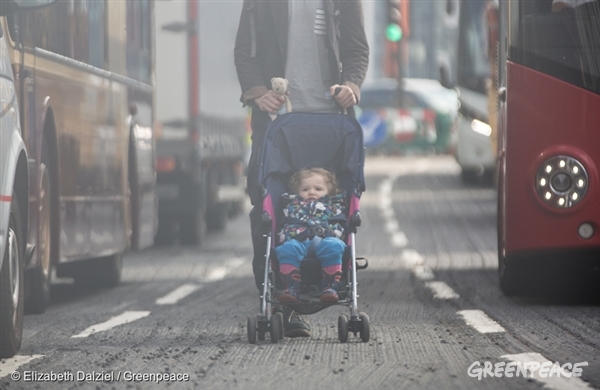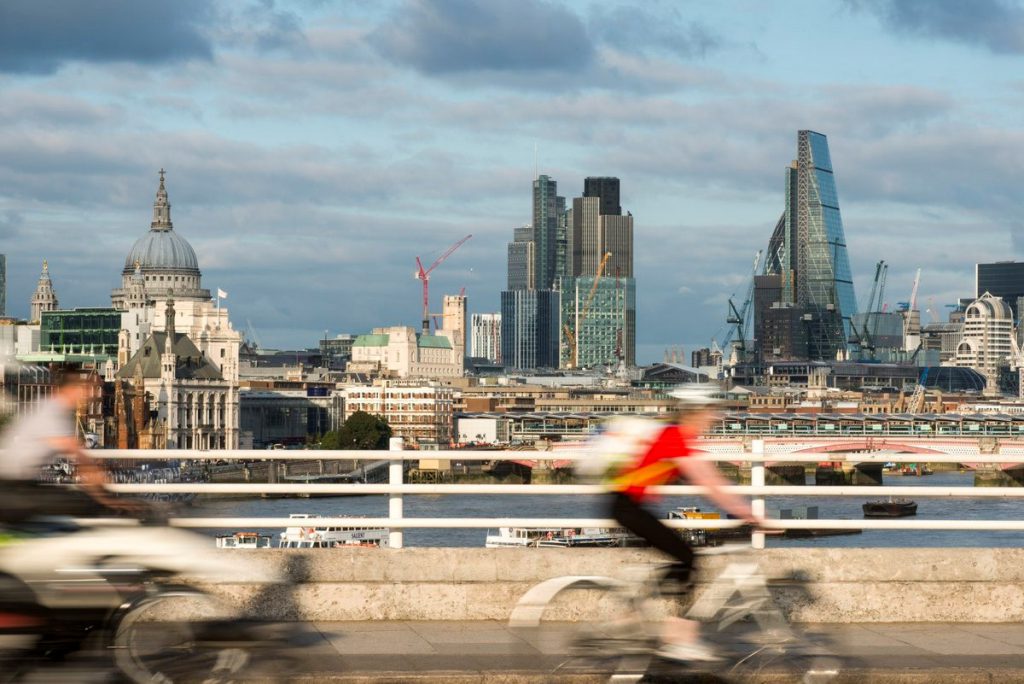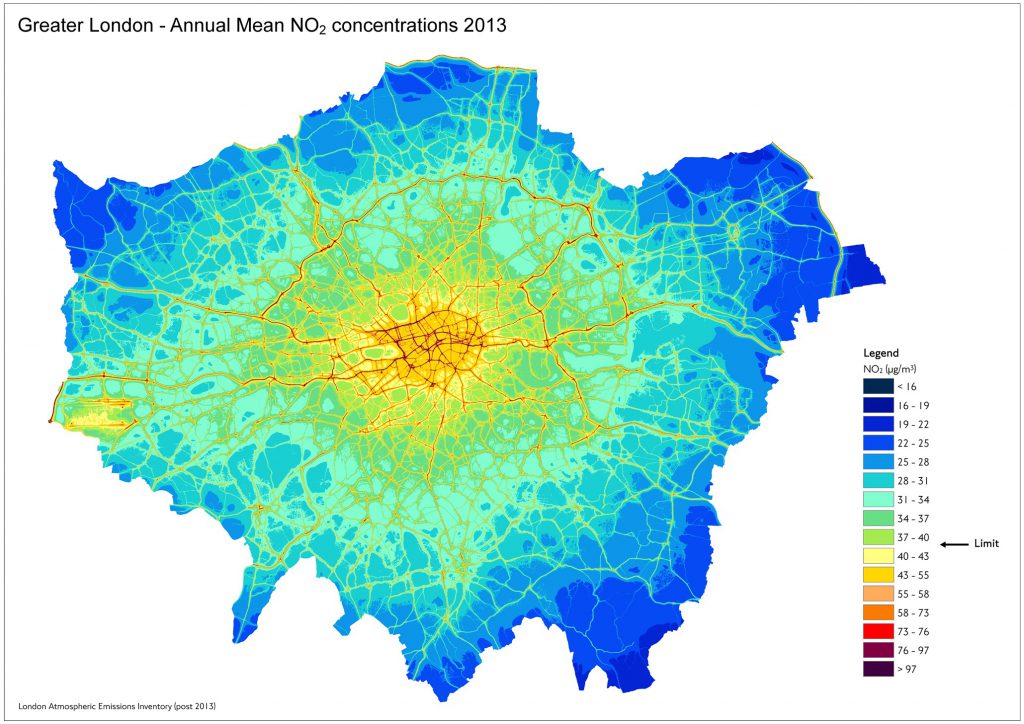You often might not be able to see or smell air pollution, but it would be difficult for you not to have seen it in the news recently. Air pollution has been linked to illness and premature death. A recent report examining the impact of exposure to air pollution across the course of a lifetime estimated that in the UK, the air pollution we breathe causes an estimated 40,000 early deaths per year. The impacts of polluted air are worse for the most vulnerable people. Air pollutants, such as nitrogen dioxide (NO2) and particulate matter (PM), have been found to damage lung development in children and worsen existing respiratory and cardiovascular conditions, particularly in older people. Furthermore, air pollution disproportionately affects the poorest in society who tend to live in areas near main roads with higher levels of air pollution.

The map below shows NO2 concentrations across London in 2013. The main roads in London are clearly identifiable, with road transport a significant source of pollutants, particularly NO2. Indeed, recent research found that 7.9 million Londoners – nearly 95% of the capital’s population – live in areas that annually exceed global limits for PM2.5 pollution particles by 50% or more annually. Brixton Road in South London was found to have breached its annual air pollution limit for nitrogen dioxide (NO2) in just the first five days of 2017.
It’s not all doom and gloom when it comes to air quality issues, however. Concern over the health implications of air pollution has led to a spike in innovative ideas and policies for addressing this issue in London. Westminster City Council for example are trialling ‘living wall’ moss installations, dubbed the CityTree, which are (according to the developers) capable of removing air pollutants including nitrogen dioxide and particulate matter from the surrounding area by up to 30%. Three London boroughs have recently been awarded funding to invest in infrastructure for cleaner vehicles. In October 2017, a toxicity charge (or T-charge) was implemented in London, meaning that older vehicles needed to meet minimum Euro emission standards or pay an additional daily charge to drive in central London in peak hours.
These actions against air quality are not limited to London, but are occurring globally as awareness of the health impacts of air quality is growing. A court ruling in Germany has now decreed that cities can impose driving bans on the oldest and most polluting diesel cars, while Brussels is to make public transport free to use on high air pollution days. Funding for researchers in tackling these issues has grown as well, with the European Commission supporting the development of a new low-cost material designed to reduce the concentration of particulate matter in urban areas. These policies will have an impact on climate change as well, as discussed at a recent panel discussion on climate change preceding a film screening of An Inconvenient Sequel, hosted by the Geography Department Sustainability Champions and King’s Climate.
King’s College London are directly involved in tackling air quality and are responsible for the London Air Quality Network, a network formed in 1993 to coordinate and improve air pollution monitoring in London. In the Department of Geography itself, students and staff are exploring the world of low-cost sensors for air quality investigations. For example, former lecturer in the Geography department, Dr Thomas Smith, attached a small ‘Arduino’ sensor (costing just £40) to a plant in his office so that the plant would automatically tweet when it needed watering or if the air quality changed in the room.

So, what can you as an individual do to address air quality in your everyday life? Here are 5 tips for you:
- If you can, walk or cycle for your daily commute, choosing quieter routes rather than main roads as this has been found to reduce your exposure to air pollution. Driving not only contributes to the problem, but also worsens exposure to air pollution, with research indicating that pollutant levels can be higher inside cars than outside of them.
- Consider using a route planner that takes air pollution into account, such as this one, so you can choose a route that minimizes your exposure.
- Try to reduce your online footprint by opting for click-and-collect or collect in store rather than personal delivery for online purchases (or by choosing not to buy it at all!). The vast majority of vehicles on London’s roads are delivery vehicles, many of which are for personal, online purchases. More vehicles on the roads means more congestion and emissions, particularly nitrogen dioxide and particulate matter.
- If you exercise outdoors, try to avoid exercising at rush hour when the air pollution has been found to be greatest.
- Contact your local council and MP and ask them to take action on air quality.

This article is full of the information I was looking for
good idea
How does the partnership between King’s and the London Air Quality Network contribute to improving air quality in the city?
In what ways do digital education platforms contribute to personalized learning experiences, and how can educators effectively integrate technology to enhance student engagement and understanding?
thank you!
Universitas Telkom
Why is air pollution a serious issue in London?